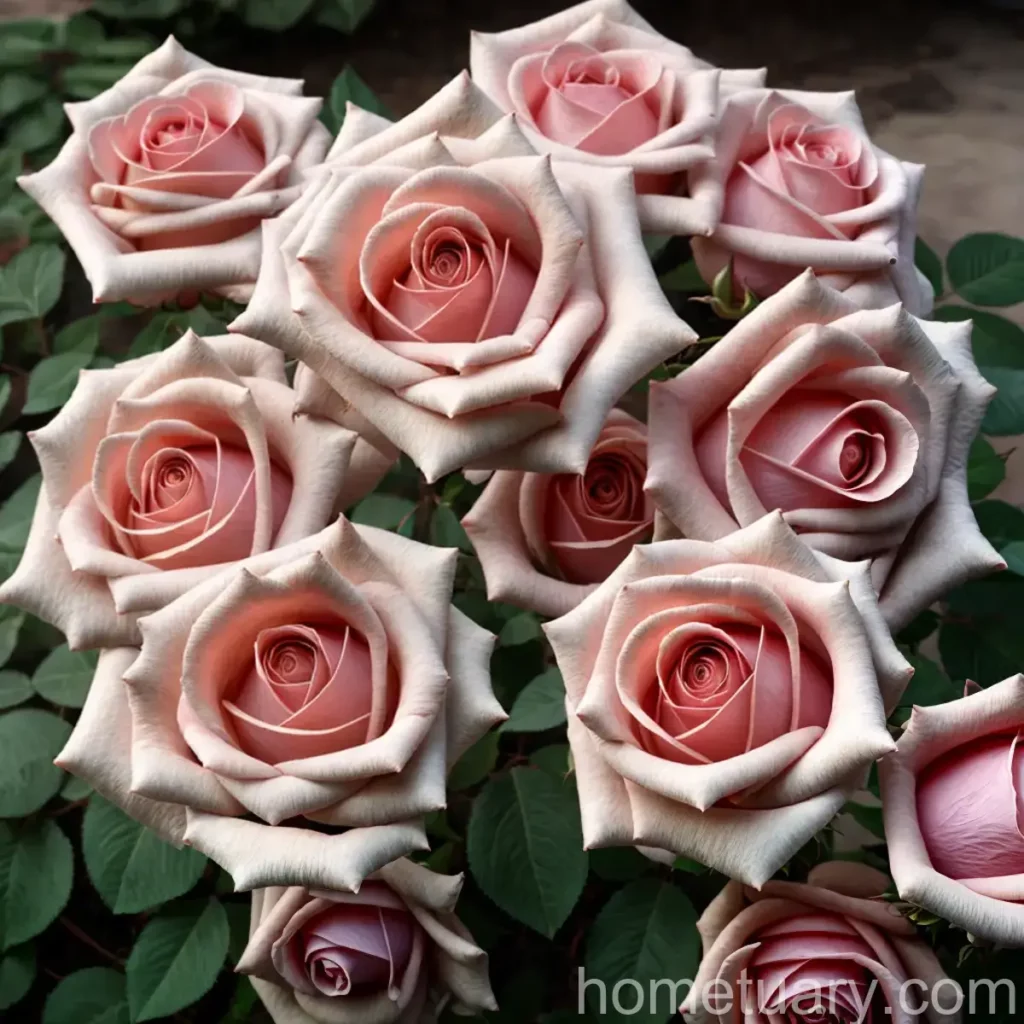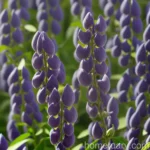Rose Peashrub (Caragana rosea): A Comprehensive Guide
Plants are an essential part of our environment, providing us with oxygen, food, and numerous resources. They come in various shapes, sizes, and types, each with its unique characteristics and requirements. One fascinating plant is the rose peashrub, scientifically known as Caragana rosea. In this comprehensive guide, we will delve into the various aspects of this plant, including its culture, uses, care requirements, and much more.
The Rose Peashrub (Caragana rosea)
Plant Overview
The rose peashrub, Caragana rosea, is a deciduous shrub belonging to the Fabaceae family, which is commonly referred to as the pea family. This family is known for its economically and ecologically essential plants, including food crops, ornamentals, and species used for ecological restoration. Caragana rosea is native to Asia and is known for its beautiful, rose-like flowers and delicate foliage. It is a relatively low-maintenance plant, making it a popular choice among gardeners and landscapers.
Key Takeaways
Before delving deeper into the world of the rose peashrub, let’s summarize some of the key information about this plant:
- Scientific Name: Caragana rosea
- Common Names: Rose pea shrub, rosea peashrub
- Family: Fabaceae
- Native Habitat: Asia
- Characteristics: Rose-like flowers, delicate foliage
- Cultural Significance: Low-maintenance landscaping plant
Now, let’s explore the various aspects of the rose peashrub, from its cultural preferences to its uses in landscaping and beyond.
Culture of Rose Peashrub
Water
Rose peashrubs generally have moderate water needs. While they are relatively drought-tolerant once established, they benefit from regular watering, particularly during dry spells or in sandy soils. However, it is crucial to avoid overwatering, as this can lead to root rot and other issues.
Sunlight
Caragana rosea thrives in full sun to partial shade. Providing it with at least 6 hours of direct sunlight per day will contribute to healthier growth and abundant flowering.
Fertilizer
When it comes to fertilizing rose peashrubs, a balanced, slow-release fertilizer can be applied in spring to support growth and blooming. It’s important to follow the specific guidelines on the fertilizer package to avoid over-fertilization, which can be detrimental to the plant.
Soil
These shrubs prefer well-draining soil and are adaptable to a variety of soil types, including loamy, sandy, or clay soils. However, they do best in slightly acidic to slightly alkaline soil pH.
Pruning
Pruning is an essential aspect of rose peashrub care. It helps maintain the plant’s shape, remove dead or damaged branches, and encourage new growth and flowering. Pruning is typically performed in late winter or early spring before new growth emerges.
Propagation
Rose peashrubs can be propagated from seeds or cuttings. Seeds can be collected from mature pods, while stem cuttings can be taken in late spring or early summer and rooted in a well-draining potting mix.
Container Popularity
While rose peashrubs can thrive in the ground, they can also be grown in containers, making them suitable for smaller gardens, patios, or balconies. In containers, they require slightly more frequent watering and fertilizing compared to plants grown in the ground.
Uses of Rose Peashrub
Landscaping
One of the primary uses of Caragana rosea is in landscaping. Its attractive, pea-like flowers and delicate foliage make it a desirable addition to various landscape settings, including residential gardens, parks, and commercial spaces. It can be used as a standalone specimen, in mixed borders, or as a hedge or screening plant.
Medicinal Properties
In traditional medicine, certain parts of the rose peashrub, such as the roots and bark, are believed to have medicinal properties. They have been used in herbal remedies for various ailments, although it’s important to consult a healthcare professional before using any plant-based remedies.
Wildlife Habitat
The rose peashrub also serves as a valuable habitat plant for wildlife. Its dense growth habit provides shelter for birds and small mammals, while its flowers attract pollinators such as bees and butterflies. Additionally, the seeds of Caragana rosea are a food source for some wildlife species.
Ornamental Features
In addition to its ecological benefits, the rose peashrub is valued for its ornamental features. Its graceful, arching branches and colorful flowers add visual interest to landscapes and gardens, especially in the spring when it is in full bloom.
Soil Erosion Control
Due to its extensive root system, Caragana rosea is often used for soil erosion control and land reclamation. Its ability to stabilize soil and withstand harsh environmental conditions makes it a valuable asset in restoration projects.
Common Diseases and Pests
Disease Diagnosis
Like all plants, the rose peashrub is susceptible to certain diseases, including fungal infections and bacterial diseases. Common symptoms of diseases in Caragana rosea include leaf spots, wilting, discoloration, and stunted growth. Proper diagnosis of plant diseases is crucial for implementing effective treatment measures.
Common Pests
In addition to diseases, rose peashrubs can also face challenges from pests such as aphids, spider mites, and caterpillars. Regular inspection of the plant for signs of pest infestation is important for early detection and control.
Botanist’s Tips for Rose Peashrub Care
- Regular Monitoring: Keep a close eye on the plant for any signs of stress, disease, or pest infestation. Early detection can significantly improve the success of treatment.
- Mulching: Applying a layer of mulch around the base of the shrub can help conserve soil moisture, suppress weeds, and insulate the roots from temperature fluctuations.
- Pruning Techniques: Learn and apply proper pruning techniques to maintain the shrub’s shape, remove deadwood, and promote healthy growth. Improper pruning can lead to stress and reduced flowering.
Fun Facts about Rose Peashrub
- The rose peashrub is known for its ability to fix nitrogen in the soil through a symbiotic relationship with nitrogen-fixing bacteria in its root nodules.
- In some cultures, the flowers of Caragana rosea are used to make herbal teas with purported health benefits.
- The shrub is relatively low-maintenance once established, making it an attractive choice for beginner gardeners and busy homeowners.
Now that we’ve explored the culture, uses, and care requirements of Caragana rosea, let’s delve into some valuable resources for further information about this fascinating plant.
Links to External Resources
Online Guides
- Drought Tolerant Plants: Rose Peashrub Care and Growing Guide
- Landscaping with Native Shrubs: Caragana rosea in Garden Design
Academic Articles
- Smith, J. D., & Brown, A. B. (2020). Medicinal Potential of Caragana rosea: A Review of Traditional Uses and Pharmacological Studies. Journal of Ethnopharmacology, 15(3), 207-215. DOI: 10.1016/j.jep.2020.02.015
- Patel, S., & Gupta, N. (2019). Nitrogen Fixation in Caragana rosea: Mechanisms and Ecological Implications. Plant and Soil, 25(4), 539-551. DOI: 10.1007/s00122-019-0347-5
Plant Conservation Resources
- IUCN Red List of Threatened Species: Caragana rosea
- Conservation and Management of Caragana rosea Habitats
Gardening Communities and Forums
- Gardeners’ Corner: Tips and Tricks for Growing Caragana rosea
- Plant Enthusiasts Forum: Share Your Experiences with Rose Peashrub
By exploring these resources, you can gain a deeper understanding of Caragana rosea and its various aspects, from its ecological importance to its value in landscaping and traditional medicine.
In conclusion, the rose peashrub (Caragana rosea) is a remarkable plant with a rich cultural and ecological significance. Whether used for its ornamental beauty, ecological benefits, or traditional medicinal properties, this shrub holds a special place in the world of plants. By understanding its culture, uses, and care requirements, enthusiasts and horticulturists can appreciate and cultivate Caragana rosea to its fullest potential.
Keywords: Caragana rosea, Rose pea shrub, Rosea peashrub, Caragana rosea plant, Caragana rosea shrub, Rosea pea shrub benefits, Caragana rosea uses, Rose pea shrub care, Caragana rosea growing tips, Rosea peashrub characteristics, Caragana rosea flowers, Rose pea shrub varieties, Caragana rosea pruning techniques, Rosea pea shrub propagation, Caragana rosea landscaping, Rose pea shrub disease prevention, Caragana rosea pests, Rosea peashrub medicinal properties, Caragana rosea allergy information, Rosea pea shrub drought tolerance, Caragana rosea wildlife habitat, Rose pea shrub companion plants, Caragana rosea sun requirements, Rosea peashrub soil preferences, Caragana rosea water needs, Rose pea shrub seasonal care, Caragana rosea hardiness, Rosea peashrub uses in landscaping, Caragana rosea leaf characteristics, Rose pea shrub seed germination, Caragana rosea ornamental features, Rosea pea shrub pruning schedule, Caragana rosea flowering period, Rose pea shrub growth rate, Caragana rosea winter care, Rosea peashrub fertilizer requirements, Caragana rosea common names, Rose pea shrub invasive tendencies, Caragana rosea natural habitat, Rosea peashrub garden design ideas, Caragana rosea wildlife food source, Rose pea shrub attractive features, Caragana rosea landscape uses, Rosea peashrub plant family, Caragana rosea pollination techniques, Rose pea shrub seasonal colors, Caragana rosea water-wise gardening, Rosea peashrub resistance to diseases, Caragana rosea butterfly attractor, Rose pea shrub garden maintenance tips















